Table of Contents
Do you know tips for Ignoring Someone with Histrionic Personality Disorder? Navigating interactions with someone with histrionic personality disorder (HPD) can be quite a journey.
This article serves as a guide to help you understand and manage interactions with people affected by HPD.
Our goal is to provide you with practical tips, information, and strategies that promote empathy, understanding, and self-care.
Although the title might imply that we support “ignoring” it is important to make it clear that our intention is not to denigrate or invalidate anyone who has HPD.
Instead, we want to give you the resources you need to set boundaries and encourage healthy connections while still acknowledging the real difficulties many with HPD encounter.
Understanding Histrionic Personality Disorder: Exploring the Disorder and Its Manifestations
It’s crucial to develop a thorough grasp of the disease before delving into the tactics for handling encounters with people who have histrionic personality disorder.
A recognized mental health problem, Cluster B personality disorders include HPD.
It is distinguished by a pervasive pattern of needing attention, acting out emotionally out of control, and feeling uneasy when not the center of attention.
You might also enjoy: How To Feel Alive Again: 20 Powerful Ways [2024]
HPD behaviors and symptoms
Individuals with HPD often exhibit a broad range of behaviors and symptoms, including:
- Attention-Seeking: An unending need for attention is a defining trait of HPD.
Speaking loudly, dressing provocatively, or making dramatic motions to get attention are just a few examples of how this might appear.
- Emotional Intensity: HPD patients frequently experience and communicate emotions in a heightened and exaggerated way.
Even insignificant occurrences could cause them to react violently, showing extreme joy, anger, sadness, or frustration. - Shallow Relationships: Although individuals with HPD may seem outgoing and sociable, their relationships tend to remain superficial.
They often struggle to establish deep, meaningful connections due to their perpetual need for novelty and excitement. - Impressionability: People with HPD are extremely vulnerable to outside pressure.
When seeking praise or admiration, individuals may effortlessly imitate the views, attitudes, or habits of those they admire, frequently to an extreme. - Sensitivity to Criticism: People with HPD may react emotionally strongly to criticism or any perceived kind of rejection.
To regain acceptance and attention, they could act irrationally, defensively, or even manipulatively. - Manipulative Behavior: To sustain the attention and admiration they yearn for, individuals with HPD may resort to manipulation, such as portraying themselves as victims or using seduction to achieve their goals.
- Exaggerated Drama: Their conversations frequently feature drama and theatrics.
To make sure they are the center of attention, they could invent or intensify disputes, tell complex tales, or have emotional outbursts. - Difficulty Maintaining Focus: Individuals with HPD often grapple with sustained attention on tasks or activities that do not revolve around them directly. This can result in inconsistency in their work or personal commitments.
You might also enjoy: Top 25 First Communion Wishes You Won’t Find Anywhere
Understanding these signs and acts paves the way for approaching relationships with more knowledge and empathy.
It’s critical to keep in mind that people with HPD do not intentionally disturb or manipulate others; rather, their behaviors frequently result from a genuine fear of rejection and abandonment.
We’ll embark on a journey through practical tips and strategies for navigating interactions with individuals who have histrionic personality disorder in the sections that follow.
Our top priorities throughout this journey will always be to support your well-being, uphold respect for your issues, and foster good relationships.
15 Tips To Ignoring Someone with Histrionic Personality Disorder
1. Recognize the Signs of HPD
The first step in managing interactions with someone who has Histrionic Personality Disorder (HPD) is understanding the condition’s warning signs and symptoms.
A recurring pattern of needing attention, being overly emotional, and feeling uneasy when not the center of attention are traits of HPD.
People with HPD frequently behave dramatically and are more sensitive to feedback or perceived rejection.
You can understand the difficulties they experience and approach them with better empathy if you can spot these indicators.
You can anticipate probable triggers and modify your behaviors when you are aware of HPD.
You can mentally get ready to react coolly and empathetically in these situations, for instance, if you are aware that the person with HPD will use dramatic displays to get attention.
Keep in mind that HPD is a real psychological ailment and sufferers may not have complete control over their actions.
Recognizing the warning flags will help you avoid taking their actions personally and create reasonable expectations for your encounters.
You might also enjoy: What To Say When Someone Calls You A Karen? [2024]
2. Practice Empathy
When interacting with someone who has Histrionic Personality Disorder, empathy is an essential tool.
It’s crucial to keep in mind that HPD is a real mental health disease, despite the temptation to write off their actions as attention-seeking or manipulative.
People with HPD frequently have trouble controlling their emotions and preserving healthy relationships.
You may more fully comprehend the difficulties they encounter and tackle the problem with compassion if you practice empathy.
Empathy is striving to understand the other person’s viewpoint and putting oneself in their shoes.
This does not obligate you to support or approve of their actions, but it does require that you approach them with an open mind and a readiness to learn.
When communicating with someone who has HPD, make an effort to affirm their sentiments and acknowledge their emotions without necessarily supporting what they are doing.
This might foster a supportive and less combative workplace.
3. Set Boundaries
When dealing with a person who has Histrionic Personality Disorder, it is crucial to establish firm and obvious limits.
These restrictions offer a foundation for appropriate conduct and aid in preventing overwhelming or chaotic interactions.
It’s crucial to express these boundaries in a composed and firm manner, stressing that they are necessary for keeping a positive and respectful relationship.
Limits on how much time and attention you are willing to provide the person with HPD can be considered a boundary.
You may decide on specified periods when you’re accessible for social contacts or chats, for instance.
Boundaries should also specify what actions are unacceptable.
You may say something along the lines of “yelling, manipulating, or emotional outbursts are not tolerated.” Maintaining these limits consistently will help your interactions feel predictable and structured.
Setting boundaries can help both you and the person with HPD by giving them clear instructions on what is and is not appropriate behavior.
Be prepared for any pushback or opposition to these restrictions, though, as people with HPD may find it difficult to accept restrictions on their attention-seeking behavior.
You might also enjoy: 35 Best Flirty Responses to How Did You Sleep? [2024]
4. Maintain Emotional Detachment
A key tactic while dealing with someone who has Histrionic Personality Disorder is to keep your emotions at bay.
This means that despite their dramatic actions or emotional outbursts, you try to maintain your composure.
It’s simple to become overwhelmed by the strong emotions that people with HPD frequently exhibit, but you can avoid this by maintaining an emotional distance from them.
You don’t have to be icy or heartless to be emotionally detached. It implies that you don’t let their feelings control how you feel about yourself.
Instead, you address the circumstance from a place of inner stability and serenity. Since persons with HPD may use emotional manipulation to entice you into their drama, this can be very difficult.
However, you may prevent becoming caught up in their emotional turbulence by keeping your emotional distance.
One practical technique to practice emotional detachment is to concentrate on your own emotional management.
Deep breathing, mindfulness, or other relaxation techniques might help you keep centered and composed during conversations with someone who has HPD.
Remember that their emotional emotions are not your responsibility and you can choose how you respond.
5. Avoid Reinforcing Attention-Seeking Behavior
As a coping mechanism for their underlying emotional issues, people with histrionic personality disorder frequently engage in attention-seeking behavior.
By caving to their cries for attention or approval, you must be careful not to unintentionally support this behavior.
Being sympathetic and understanding is crucial, but it’s just as crucial to avoid supporting harmful or unsuccessful behavior.
Try to refocus the conversation or interaction on more productive topics or activities rather than enabling their attention-seeking behavior.
For instance, if they are trying to get your attention with a dramatic story or emotional outburst, you might gently nudge the topic in a more uplifting or neutral direction.
You encourage kids to use better self-expression and communication techniques by doing this.
It’s important to keep in mind that your purpose is to assist the person with Histrionic Personality Disorder in learning more adaptive ways of getting attention and controlling their emotions, not to penalize or reject them.
This strategy can be difficult because when they try to get your attention but are unsuccessful, they might resist or get angry.
It can, however, result in interactions that are more harmonious and useful over time.
You might also enjoy: People Come Into Your Life For A Reason: 15 Causes
6. Use the Gray Rock Method
When interacting with someone who has Histrionic Personality Disorder, the Gray Rock Method suggests becoming as dull and unresponsive as a gray rock.
This approach can assist in de-escalating emotionally charged situations by decreasing the person’s interest in connecting with you.
Your objective when using the Gray Rock Method is to maintain your responses as neutral as you can while minimizing your emotional responses.
Respond to their actions with minimum emotional expression and give them succinct, direct responses to any queries or statements they make.
Avoid expressing shock, rage, or intense affirmation in your response because this may be what they are looking for.
For instance, if the person with HPD delivers an exaggerated or dramatic scenario, just say, “I see,” or “That sounds challenging.”
This tactic communicates to them that you are not readily swayed by their emotional outbursts, which may discourage them from engaging in similar conduct in the future.
Without resorting to confrontation or animosity, the Gray Rock Method can be a highly efficient approach to ending stressful interactions with someone who has HPD.
It enables you to maintain some level of deference and empathy while safeguarding your mental health.
7. Practice Active Listening
There are occasions when active listening can be helpful, even though it may be important to disconnect and maintain emotional distance while interacting with someone who has Histrionic Personality Disorder.
offering someone your entire attention while acknowledging their feelings and responding empathically without necessarily offering them the intense validation they crave is known as active listening.
When the HPD patient is genuinely distressed or upset, active listening is extremely helpful.
You can assist in avoiding a further escalation of the situation by listening intently and demonstrating that you care about their sentiments.
But it’s crucial to strike a balance between active listening and emotional distance because giving them too much praise can just serve to reinforce their attention-seeking behavior.
Keep eye contact, nod in agreement, and say something like “I understand how you feel” or “I’m here to listen” to demonstrate active listening.
Avoid interfering with or getting too interested in their emotional story.
Create a comfortable environment where they can express their feelings while still respecting your boundaries.
You might also enjoy: 30 Best Emotional Goals For Having An Amazing 2024
8. Seek Support
Dealing with someone who has Histrionic Personality Disorder can be emotionally demanding, so realize when you need help.
Don’t be afraid to talk to friends, family, or a therapist about your feelings and experiences.
Discussing your contacts with the individual with HPD with others might bring crucial insight and emotional relief.
You can also preserve your emotional stability through difficult interactions by receiving support from friends and relatives.
You can better negotiate the complexity of the relationship with their assistance, empathy, and listening ear.
Getting assistance from a therapist or counselor can also be very helpful.
A mental health expert can offer coping skills, explain the disease better, and give you advice on how to handle encounters with others who have Histrionic Personality Disorder.
You can communicate your own feelings and worries in a safe environment during therapy, free from criticism.
9. Evaluate the Relationship
It’s important to regularly assess the nature of your relationship with a person who has a histrionic personality disorder.
Find out if this relationship is positive, uplifting, and mutually helpful or if it’s toxic and harming your happiness.
This evaluation can aid in your decision-making over how to establish healthy boundaries and whether to keep the relationship going.
It can be necessary to reconsider the relationship’s worth if it is causing you a lot of stress, hurting your mental health, or preventing you from pursuing your own objectives and interests.
While separating oneself from a loved one can be difficult, it’s important to put your own needs first.
Analyze the HPD sufferer’s willingness to change their behavior and work on improving themselves.
There may be hope for the relationship to become better if they are willing to get expert assistance and make constructive changes.
It may be in your best interest to think about separating yourself from them or perhaps leaving the relationship if they refuse to change and carry on with their toxic actions.
You might also enjoy: Why Am I Bad at Everything? 17 Psychological Reasons You Are Wrong!
10. Encourage Professional Help
Encourage the individual with histrionic personality disorder to get professional therapy if you actually care about them and think that their behavior is having a negative effect on their life and relationships.
They can get the skills they need to better control their emotions and behaviors from a qualified therapist or mental health counselor.
Since people with HPD may be reluctant to consider getting therapy, bringing up the subject might be tricky.
It’s critical to approach the discussion with empathy and compassion, highlighting the fact that therapy is not a means of condemnation but a tool for personal development and well-being.
You can let them know you’re worried about their health and let them know that counseling can give them helpful tools for controlling their strong emotions and enhancing their relationships.
Be ready for any defensiveness or resistance, but be patient and encouraging nonetheless.
Offer to help them locate a licensed therapist or give them details on local mental health options.
11. Cultivate Patience and Resilience
Being patient and resilient when dealing with someone who has HPD can be a challenge.
Recognize that persons with HPD may experience gradual change and frequent setbacks.
It’s crucial to keep a long-term perspective and not anticipate a change in their conduct right away. Instead, pay attention to incremental advancements and recognize their efforts when they are made.
When handling emotionally sensitive situations, patience is also essential.
It’s crucial to avoid acting impulsively while around people with HPD because they may have severe emotional reactions.
Recall that their feelings are a mirror of their internal issues and not necessarily a personal assault on you by taking a step back, taking a deep breath, and doing so.
You might also enjoy: 30 Best Flirty Responses to How Was Your Day?
12. Avoid Reacting with Criticism or Condescension
It’s normal to become frustrated or irritated when someone behaves dramatically or in an attention-seeking manner.
However, it is unlikely to be helpful and can make the problem worse to respond in a critical or condescending manner.
Remarks that are contemptuous or judgemental should be avoided as they may escalate a situation.
Strive to express your worries instead in a calm and helpful manner.
To convey how their actions affect you, use “I” statements. Say something like, “I feel overwhelmed when there is a lot of drama,” rather than, “You’re so dramatic all the time.”
By using this tactic, you can keep the channels of communication open and keep the other person from getting defensive.
13. Encourage Positive Outlets for Expression
People with HPD frequently experience difficulties efficiently controlling their strong emotions.
It may be advantageous to encourage them to look into constructive means of expressing their emotions.
Encourage them to use creative expression, exercise, or journaling as a means to manage their emotions.
By promoting these channels, you provide them with alternative ways to cope with emotional turmoil, thereby reducing their reliance on attention-seeking behavior.
Offer support and participate in these activities together when appropriate, reinforcing the idea that you care about their well-being and are willing to participate constructively.
You might also enjoy: Does My Husband In Heaven Remember Me?
14. Be Consistent in Your Responses
When interacting with someone who has Histrionic Personality Disorder, being consistent with your replies and limits is essential.
People who have HPD may use numerous strategies, such as manipulation or provocative conduct, to push limits or attract attention.
It’s important to remain consistent in how you react to such behavior.
If you’ve established boundaries, uphold them despite any resistance from the other person. Confusion might result from inconsistent messaging.
You establish predictability in your interactions by constantly enforcing limits and responding to attention-seeking conduct in the same way each time.
15. Educate Yourself and Others
Gaining more knowledge about Histrionic Personality Disorder is an important first step in managing interactions with those who suffer from it.
To learn more about the nuances of the disease and available treatments, read books, and articles or visit trustworthy mental health sites.
Also, think about teaching those close to you about HPD and the difficulties it poses.
They can offer you more effective support and prevent unintentionally reinforcing harmful behavior when friends and family are aware of your illness.
Increasing knowledge of HPD can also help to lessen the stigma attached to mental health issues.
Here we have a podcast about Histrionic Personality Disorder, I hope this podcast helps you:
Conclusion
Managing encounters with someone who has Histrionic Personality Disorder calls for a careful balancing act of empathy, tolerance, and self-care.
You can engage with compassion while defending your well-being by comprehending the disorder, establishing boundaries, and maintaining emotional distance.
The key to managing these difficult relationships is to avoid criticism, support constructive outlets for expression, and be consistent in your responses.
Additionally, educating others about HPD and yourself might result in better knowledgeable and sympathetic support networks.
Keep in mind that you may balance aiding a person with histrionic personality disorder with protecting your own mental and emotional well-being.
These 15 suggestions can help you handle these challenging relationships with grace and resiliency, leading to mutual understanding and development for all sides.




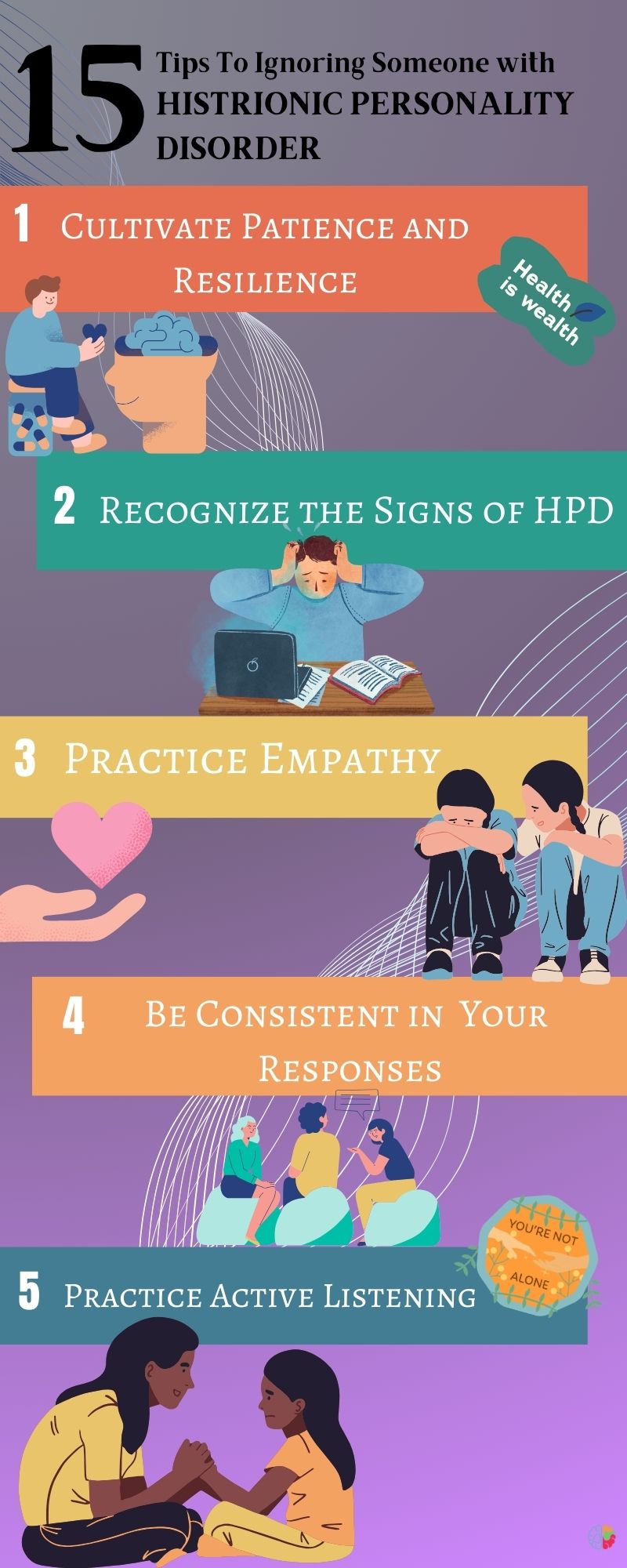
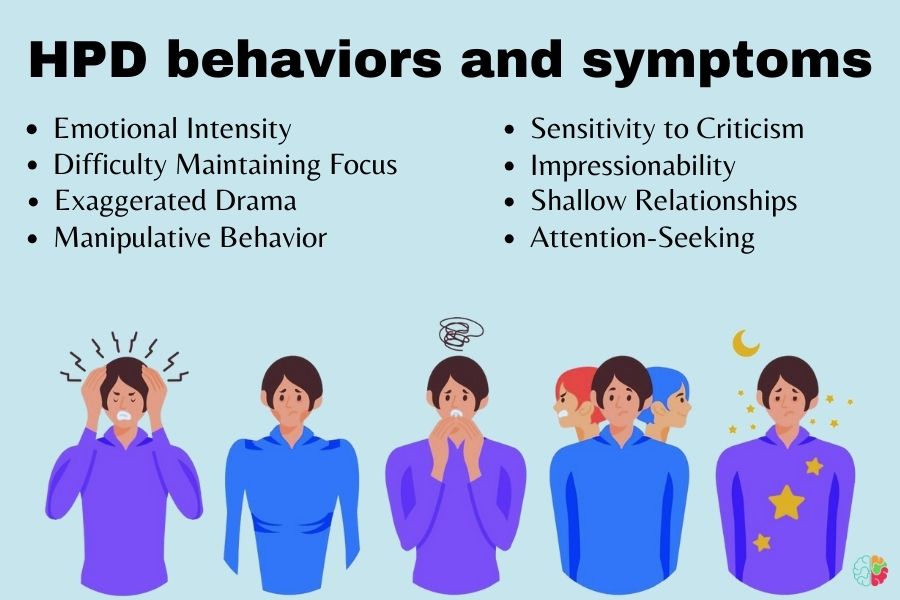
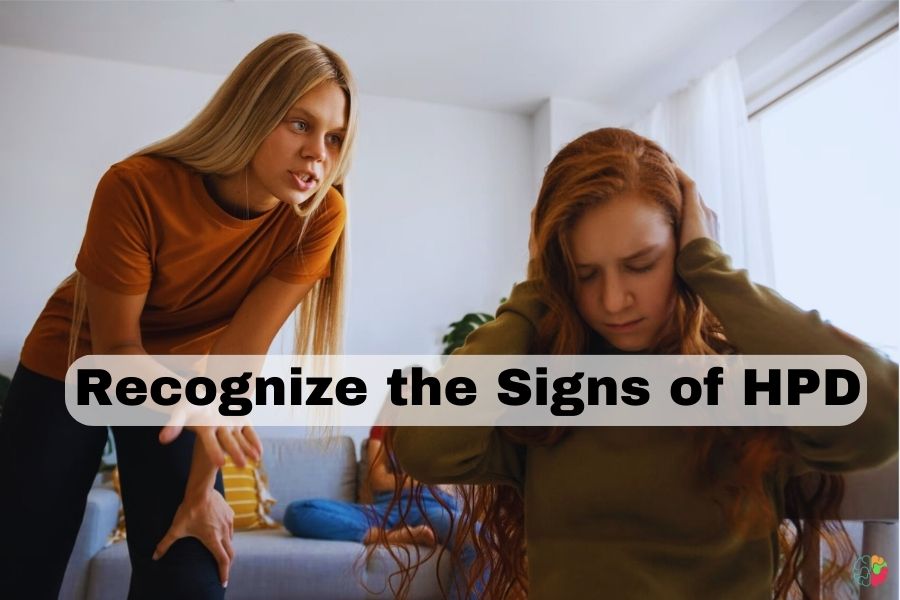


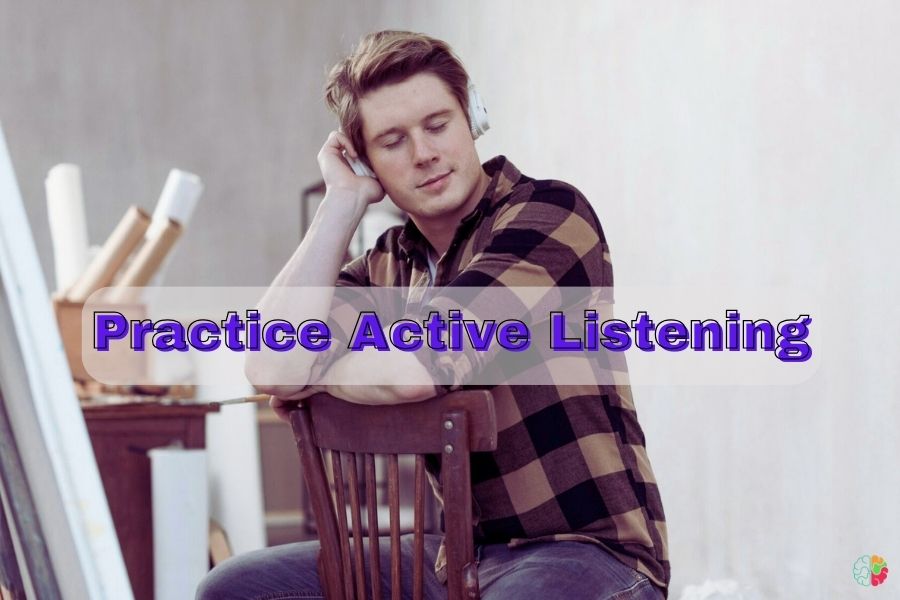


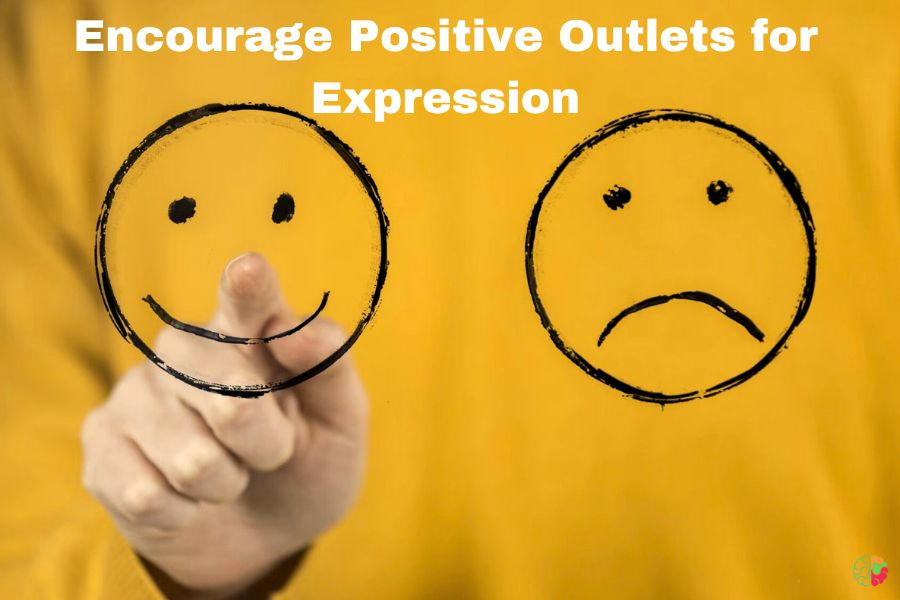

![15 Signs You Were Raised by a Toxic Mother [2024]](https://mindsetopia.com/wp-content/uploads/2023/09/15-Signs-You-Were-Raised-by-a-Toxic-Mother-2024-150x150.jpg)
![Hero Instinct 12 Word Text Revealed [2024]](https://mindsetopia.com/wp-content/uploads/2023/10/Hero-Instinct-12-Word-Text-Revealed-2024-150x150.jpg)